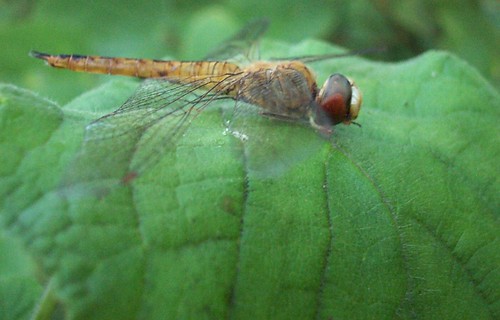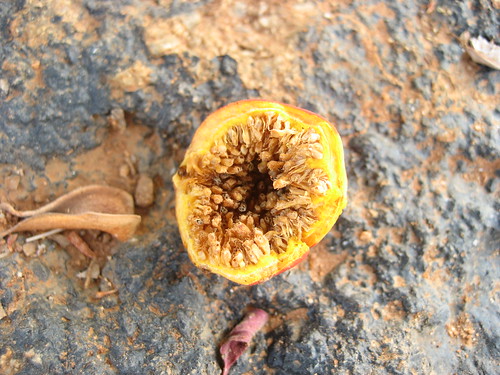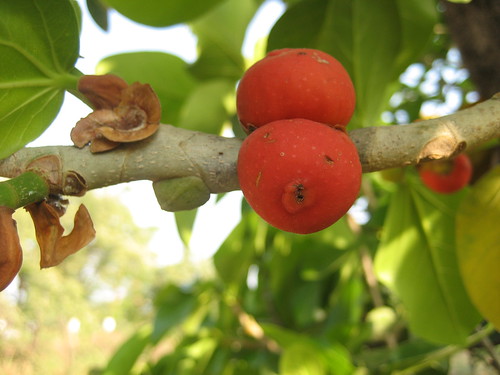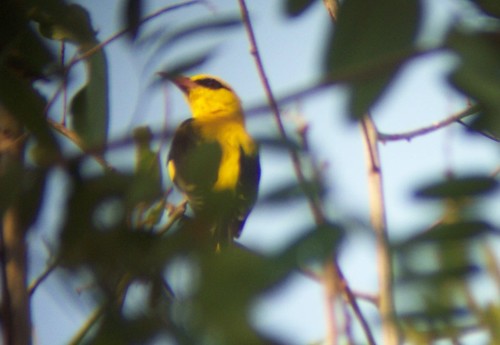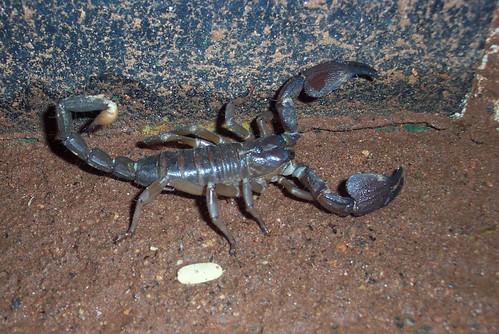
Here's a checklist of trees (and a few shrubs) I have been able to identify in IIIT-H. These have been taken all over the campus, including the small garden behind the NBH mess. There are many ornamental plants in the campus, i.e. plants that are not native to India but have been planted for their flowers or their fast-growing properties. But there are also a few native trees- most obviously Neem, the Flame of the Forest, Jamun, Jhingan etc. These trees also attract many birds and insects when flowering/fruiting. I may have missed a few species in this list, but most of these are the most visible and common trees on campus.
- Banyan - Ficus benghalensis
- Guava - Psidium guajava
- Copper Pod - Peltophorum pterocarpum
- Teak - Tectonia grandis
- Kachnar/Mountain Ebony- Bauhinia variegata
- Kachnar - Bauhinia purpurea
- Dwarf Bauhinia - Bauhinia acuminata
- Shisham - Dalberia sisoo
- Takoli - Dalbergia lanceolaria
- Indian Elm/Kanju - Holoptelea integrifolia
- Palash/ Flame of the forest- Butea monosperma
- False Almond - Sterculia foetida
- Indian Almond - Terminalia catappa
- Sausage Tree - Kigelia pinnata
- Jamun - Syzigium cumini
- Brazilian Cassia - Cassia grandis
- Indian Laburnum - Cassia fistula
- Jacaranda - Jacaranda mimosifolia
- Gulmohar - Delonix regia
- Pongam - Pongamia pinnata
- Subabool - Leucaena leucocephala
- Neem - Azadirachta indica
- Badminton Ball tree - Parkia biglandulosa
- Phalsa - Grewia asiatica
- African Tulip Tree - Spathodea campanulata
- Devil's tree - Alstonia scholaris
- Shirish - Albizia lebbek
- Maulsari - Mimusops elengi
- Pink Trumpet flower - Tabebuia rosea
- Yellow Trumpet flower - Tabebuia aurea
- Drumstick tree - Moringa oleifera
- Apta - Bauhinia racemosa
- Jhingan - Llanea coromandelica
- Silver Oak - Grevillea robusta
- Earpod wattle - Acacia auriculiformis
- Peacock flower - Caesalpinia pulcherrima
- Rain tree - Albizia saman
- Singapore cherry- Muntingia calabura
- Pomegranate - Punica granatum
- Portia tree - Thespesia populnea
- Annatto - Bixa orellana
- Sicklebush- Dichrostachys cinerea
- Giant Milkweed - Calatropis gigantea
- Oleander - Nerium oleander
- Sago palm - Cycas revoluta
- False Eranthemum - Pseuderanthemum reticulatum
- Indian Ginger - Alpinia calcarata
- Dhavda - Anogeissus latifolia
- Common Night Glory - Rivea hypocrateriformis
- Golden Cane Palm - Dypsis lutescens




